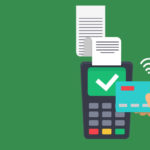What is contactless technology?
Contactless technology enables users to make card payments through near-field communication (NFC). Adoption of this technology has grown exponentially in recent years, thanks to the benefits it offers both consumers and stores.

More than one third of the card payments made in June 2017 in the U.K. were contactless, according to Visa’s Digital Payments report, as covered by Business Insider. The report analyzes the evolution of this technology, which was first introduced in the United Kingdom 10 years ago.
But what exactly is contactless technology and why has it been so successful? As its name indicates, it is a contactless form of communication technology that makes it possible to pay by card just by putting the card close to the point of sale (POS) terminal.
The system uses near-field communication (NFC) —a short-range wireless technology that allows for instant data transmission among devices that are several centimeters apart—. Its technology is based on radio-frequency identification technology (RFID), which is also integrated in public transportation passes and some security systems to open doors.
Incorporating this technology in credit cards and POS terminals creates a communication channel that serves to send and receive information for payment authorization in a secure manner. Thanks to NFC, it’s possible to pay almost instantly by simply placing the card on the POS, without having to insert or scan it.
Furthermore, with contactless cards, users only have to introduce the personal identification number (PIN) for amounts over €20, making it very convenient for small purchases. Users can also set up the system to always ask for the PIN.
For this type of payment to work, both devices must have integrated NFC technology. Cards with this technology have an easily recognizable symbol, just like the contactless POS terminals.
BBVA cards already have this function integrated and the system is rapidly expanding in businesses across Europe. According to a Visa Europe report, in May 2016, there were 3.2 million POS terminals and 165 million active Visa cards compatible with this contactless technology. In order to put these numbers into perspective, the Visa report underscores that the number of payments made with this technology increased from one in sixty in 2013 to one in five in 2016.